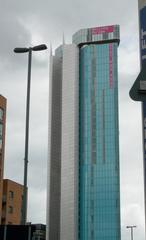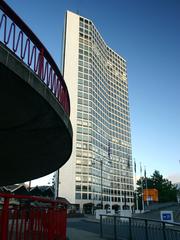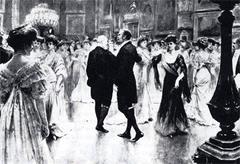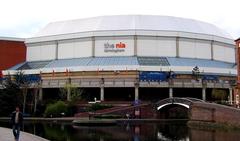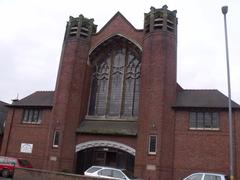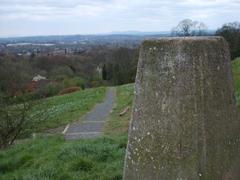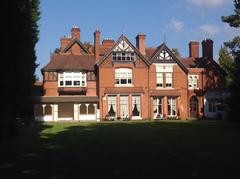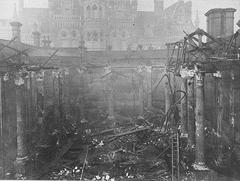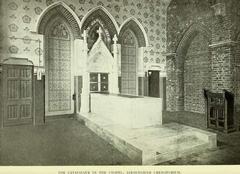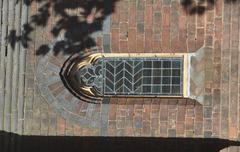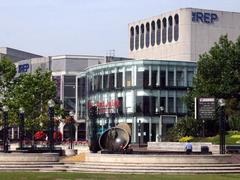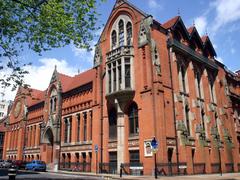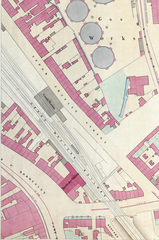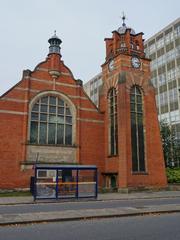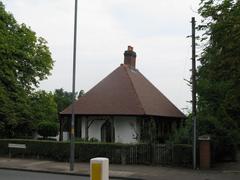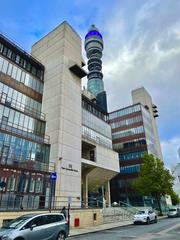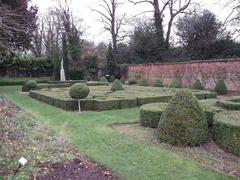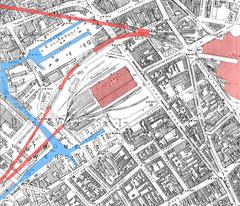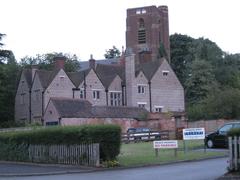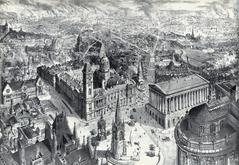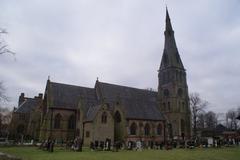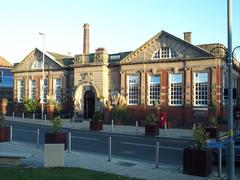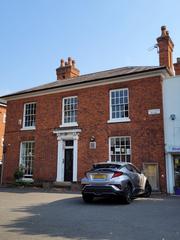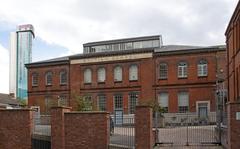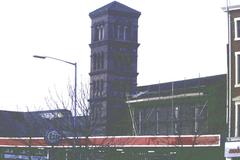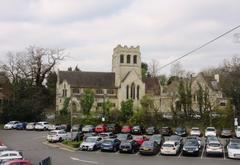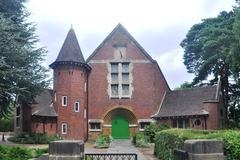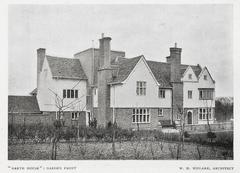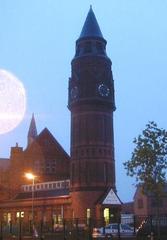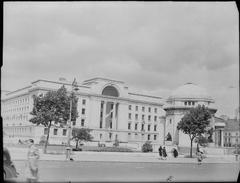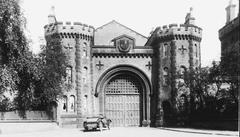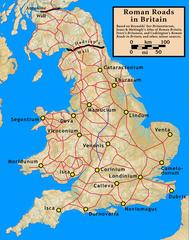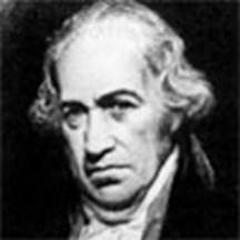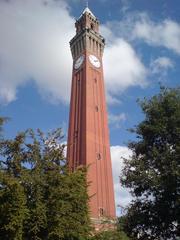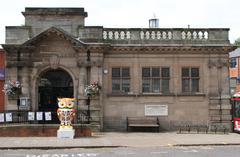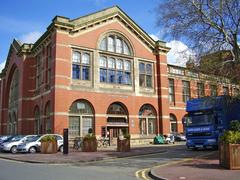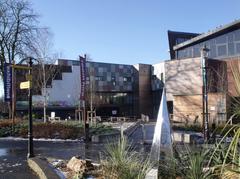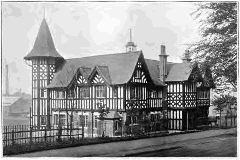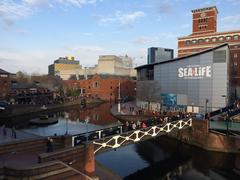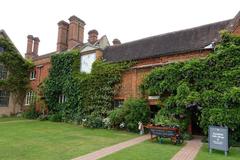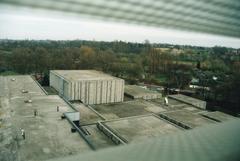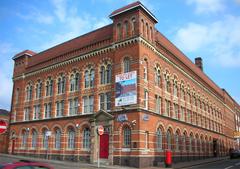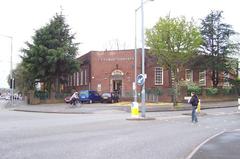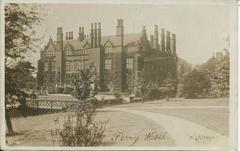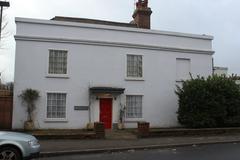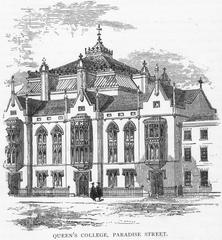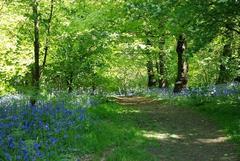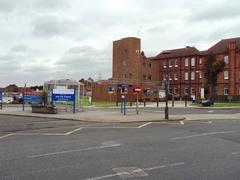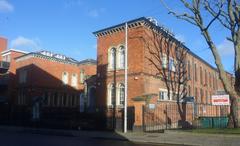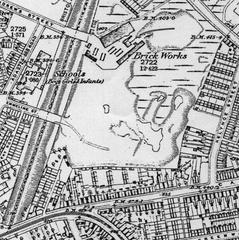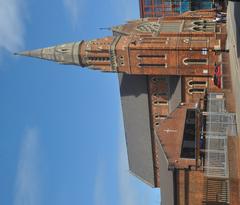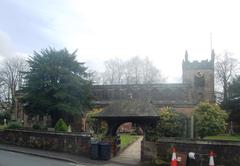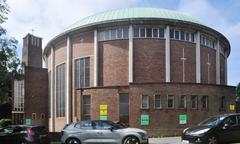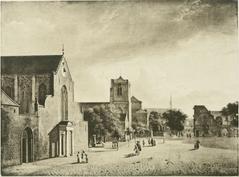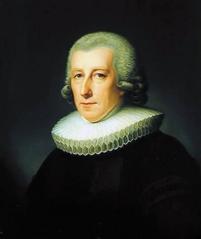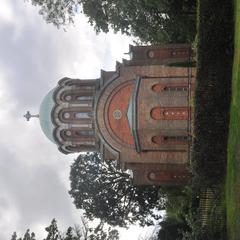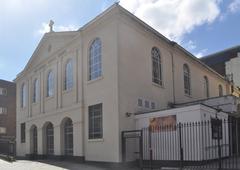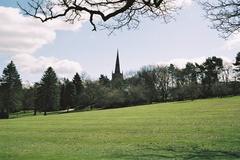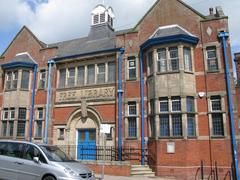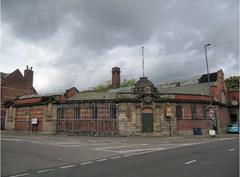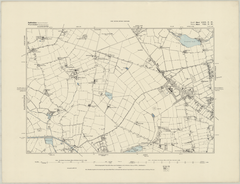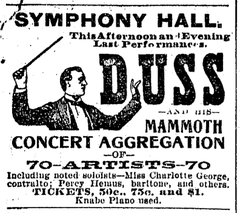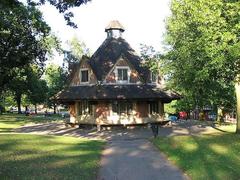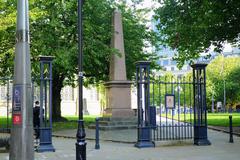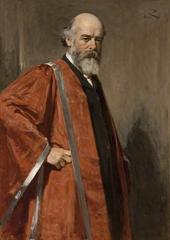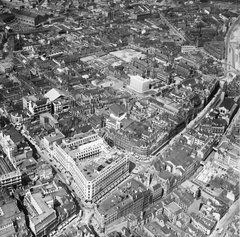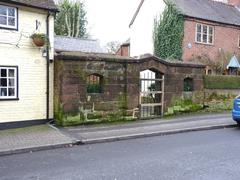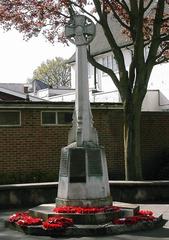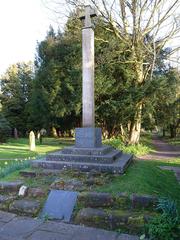Highbury Park Visiting Guide: Hours, Tickets, and Tips for Birmingham’s Historical Site
Publication Date: 19/07/2024
Introduction: Explore the Rich History and Visitor Information of Highbury Park
Highbury Park, located in the Moseley and Kings Heath areas of Birmingham, is a rich historical and natural oasis that has captivated visitors for generations. This expansive park, which spans over 100 acres, was once part of the estate of Joseph Chamberlain, a prominent British statesman and former Mayor of Birmingham. Built in 1878, Highbury Hall stands as a testament to Chamberlain’s influence and is an exemplary piece of Victorian Gothic architecture (Birmingham City Council). Highbury Park offers visitors a unique blend of historical significance, natural beauty, and cultural value. From its origins as a private estate to its contemporary role as a beloved public park, it continues to serve as a green haven in the heart of Birmingham. The park’s diverse habitats, including ancient woodlands, meadows, and wetlands, support a wide range of flora and fauna, making it a haven for nature enthusiasts (Historic England). This guide provides an in-depth look into the history, architectural features, visitor information, and conservation efforts at Highbury Park, ensuring you make the most of your visit.
Table of Contents
- Introduction
- Early Beginnings
- Joseph Chamberlain and Highbury Hall
- Transition to Public Park
- World War II and Post-War Era
- Modern Developments
- Architectural and Natural Features
- Visitor Information
- Special Events and Guided Tours
- Popular Photographic Spots
- Cultural Significance
- Conservation Efforts
- Visitor Experience
- Future Prospects
- Frequently Asked Questions
- Conclusion
- Sources
Discover the History and Visitor Guide of Highbury Park in Birmingham
Early Beginnings
Highbury Park, located in the Moseley and Kings Heath areas of Birmingham, has a rich history that dates back to the 18th century. The land that now constitutes Highbury Park was originally part of the estates of wealthy Birmingham families. The park itself is named after Highbury Hall, a grand mansion built in 1878 by Joseph Chamberlain, a prominent British statesman and industrialist. Chamberlain’s influence on Birmingham’s development was significant, and his choice to build Highbury Hall in this area underscores the historical importance of the site (Birmingham City Council).
Joseph Chamberlain and Highbury Hall
Joseph Chamberlain, often referred to as the “Father of Birmingham,” played a pivotal role in the city’s development during the late 19th and early 20th centuries. Highbury Hall was designed by the architect John Henry Chamberlain (no relation), and it served as Chamberlain’s family home. The mansion is an excellent example of Victorian Gothic architecture, featuring intricate stonework and expansive gardens. Highbury Hall was not just a residence but also a political hub where Chamberlain hosted numerous influential figures of the time (Historic England).
Transition to Public Park
After Joseph Chamberlain’s death in 1914, Highbury Hall and its surrounding grounds underwent several changes. The Chamberlain family continued to reside in the hall until 1932, when it was sold to Birmingham City Council. The council’s acquisition of the property marked the beginning of its transformation into a public park. The grounds were gradually opened to the public, providing a green oasis in the heart of Birmingham. This transition was part of a broader movement in the early 20th century to create public parks and recreational spaces in urban areas (Birmingham City Council).
World War II and Post-War Era
During World War II, Highbury Hall and its grounds were requisitioned by the government for military use. The hall served as a hospital and later as a base for the Home Guard. The park itself was used for various wartime activities, including training exercises and food production. After the war, the park was restored to its pre-war condition and reopened to the public. The post-war era saw significant investment in the park’s infrastructure, including the creation of new pathways, gardens, and recreational facilities (BBC History).
Modern Developments
In recent decades, Highbury Park has continued to evolve, reflecting the changing needs and interests of Birmingham’s residents. The park is now managed by the Highbury Park Friends, a community group dedicated to preserving and enhancing the park’s natural and historical features. Recent projects have focused on biodiversity, with efforts to restore native plant species and create habitats for local wildlife. The park also hosts various community events, including guided walks, educational programs, and cultural festivals (Highbury Park Friends).
Architectural and Natural Features
Highbury Park is renowned for its blend of architectural and natural features. Highbury Hall remains a focal point, with its Victorian Gothic architecture attracting history enthusiasts and architecture buffs alike. The park’s landscape is characterized by rolling lawns, mature woodlands, and ornamental gardens. Notable features include the Italian Garden, designed by Joseph Chamberlain himself, and the Rhododendron Walk, which offers a stunning display of flowers in the spring. The park also contains several historic structures, including a 19th-century ice house and a series of ornamental ponds (Parks and Gardens UK).
Visitor Information
- Visiting Hours: Highbury Park is open daily from dawn until dusk. Specific visiting hours for Highbury Hall can be found on the official website.
- Tickets and Entrance Fees: Entry to Highbury Park is free. Some events or special tours at Highbury Hall may require tickets. Check the Highbury Hall website for more details.
- Accessibility: The park has several accessible pathways, and efforts are ongoing to improve accessibility for all visitors.
- Travel Tips: The park is easily accessible by public transport, with several bus routes stopping nearby. Parking is available, but it is recommended to use public transport during peak times.
- Nearby Attractions: While visiting Highbury Park, consider exploring other nearby historical sites such as Cannon Hill Park and the Birmingham Botanical Gardens.
Special Events and Guided Tours
Highbury Park hosts a variety of special events throughout the year, including the annual Highbury Festival, guided historical walks, and nature tours. Guided tours of Highbury Hall are available by appointment and provide an in-depth look at the mansion’s history and architecture (Birmingham Museums Trust).
Popular Photographic Spots
Photographers will find plenty of picturesque spots in Highbury Park. The Italian Garden and Rhododendron Walk are particularly popular for their seasonal beauty. Highbury Hall itself offers stunning architectural details that make for captivating photographs.
Cultural Significance
Highbury Park holds a special place in Birmingham’s cultural landscape. It is not only a testament to the city’s rich history but also a vibrant community space that brings people together. The park’s historical significance is celebrated through various heritage projects and educational initiatives. For example, the Highbury Heritage Trail offers visitors a self-guided tour of the park’s historical landmarks, complete with interpretive signage and digital resources. The park also serves as a venue for cultural events, such as the annual Highbury Festival, which features music, art, and food from around the world (Birmingham Museums Trust).
Conservation Efforts
Conservation is a key focus for Highbury Park’s management. The park’s diverse habitats support a wide range of flora and fauna, making it an important site for urban biodiversity. Recent conservation efforts have included the restoration of the park’s historic woodlands, the creation of wildflower meadows, and the installation of bird and bat boxes. These initiatives aim to enhance the park’s ecological value while preserving its historical character. The Highbury Park Friends work closely with local schools and community groups to promote environmental education and stewardship (Friends of the Earth).
Visitor Experience
Today, Highbury Park offers a unique blend of history, nature, and recreation. Visitors can explore the park’s historical landmarks, enjoy its scenic beauty, and participate in a wide range of activities. The park’s extensive network of paths and trails makes it accessible to walkers, joggers, and cyclists. Picnic areas and playgrounds provide family-friendly amenities, while the park’s tranquil gardens offer a peaceful retreat for those seeking relaxation. Highbury Park is also a popular destination for birdwatching, with its diverse habitats attracting a variety of bird species throughout the year (Visit Birmingham).
Future Prospects
Looking ahead, Highbury Park is poised to continue its legacy as a cherished public space in Birmingham. Ongoing and planned projects aim to further enhance the park’s facilities and natural features. These include the restoration of Highbury Hall, improvements to the park’s accessibility, and the development of new community programs. The park’s management is committed to balancing conservation with public enjoyment, ensuring that Highbury Park remains a vibrant and sustainable resource for future generations (Birmingham City Council).
Frequently Asked Questions
- What are the visiting hours for Highbury Park? Highbury Park is open daily from dawn until dusk.
- Is there an entrance fee for Highbury Park? No, entry to Highbury Park is free.
- Are there any guided tours available? Yes, guided tours of Highbury Hall are available by appointment. Check the official website for more details.
- Is Highbury Park accessible? Yes, there are several accessible pathways, and ongoing improvements are being made to enhance accessibility.
Conclusion: Key Takeaways from Your Visit to Highbury Park
Highbury Park stands as a living testament to Birmingham’s rich history and commitment to preserving green spaces for public enjoyment. From its origins as part of Joseph Chamberlain’s estate to its transformation into a public park, Highbury Park has continuously evolved to meet the needs of its community. The park not only offers a peaceful retreat with its diverse natural habitats but also serves as a cultural hub with its historical landmarks and community events (Friends of the Earth). Conservation efforts by dedicated groups like the Highbury Park Friends ensure that the park remains a vibrant and sustainable resource for future generations. As you explore Highbury Park, you will find a harmonious blend of history, nature, and community spirit, making it a must-visit destination in Birmingham. Whether you’re interested in guided tours of Highbury Hall, participating in community events, or simply enjoying a leisurely walk through its picturesque landscapes, Highbury Park has something to offer everyone (Visit Birmingham).
References and Sources
- Discover the History and Visitor Guide of Highbury Park in Birmingham, 2024, Birmingham City Council
- Joseph Chamberlain and Highbury Hall, 2024, Historic England
- Transition to Public Park, 2024, Birmingham City Council
- World War II and Post-War Era, 2024, BBC History
- Modern Developments, 2024, Highbury Park Friends
- Architectural and Natural Features, 2024, Parks and Gardens UK
- Special Events and Guided Tours, 2024, Birmingham Museums Trust
- Cultural Significance, 2024, Birmingham Museums Trust
- Conservation Efforts, 2024, Friends of the Earth
- Visitor Experience, 2024, Visit Birmingham
